Top 10 Most Beautiful Historical Sites in Latvia
Latvia is an outstanding blend of art nouveau buildings and pure landscape, located on the Baltic Sea between Lithuania and Estonia. From huge metropolitan ... read more...sophistication to authentic rural charm, Latvia provides a warm welcome to all tourists. You may see historic castles, stroll through gorgeous landscapes, and relax on kilometers of beaches in this Baltic gem. The most beautiful historical sites in Latvia are listed below.
-
Turaida Castle (Latvian: Turaidas pils) is a newly restored medieval castle in Turaida, Latvia, on the opposite side of the Gauja River from Kurzeme.
Turaida Castle is the most aesthetically striking feature of the Museum Reserve. Turaida Castle may be seen towering above the treeline whether viewed from the air or the other side of the river Gauja in Sigulda. The northern forecastle's entrance tower forms the forepart of the castle from this perspective. The highest tower, the main tower, is in the center, while the southern forecastle with its tower-shaped southern part is visible from the back.
Turaida Castle, which means "Thor's garden" in the old occupants' language, offers a walk along the castle ramparts and an exploration of medieval architecture features. This is one of the most beautiful historical sites in Latvia. The red-brick castle has been designated as a cultural site with particular protection. In 1214, the Archbishop of Riga proposed that the structure be built for a Crusader order. You'll view the original surviving parts of a defensive wall, the main tower, a semi-rounded tower, and the western section as you visit the building. Exhibits inside the renovated buildings provide information about the history and restoration process. The main tower may be climbed for a view of the valley.
Website: http://www.turaida-muzejs.lv/?lang=enLocation: Turaidas iela 10, Sigulda, Siguldas pilsēta, LV-2150, Latvia
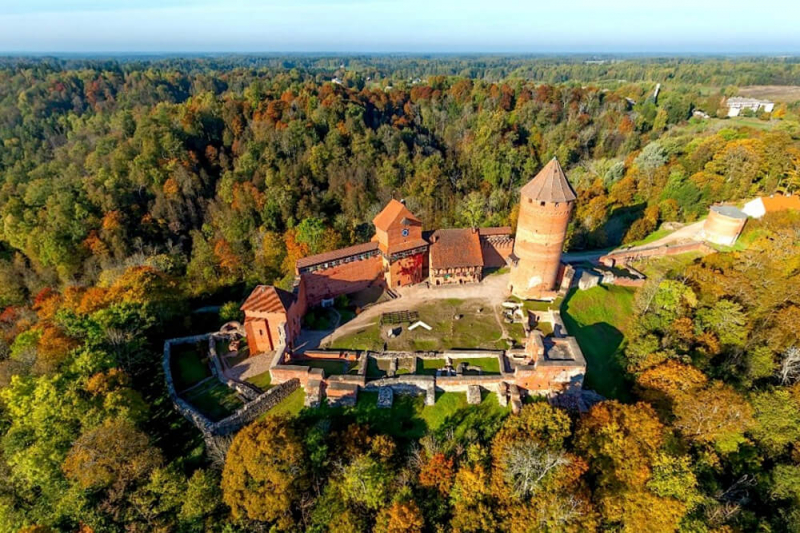
Photo: https://www.turaidacastle.com/ Video: A&M Wandering around -
At the Latvian Ethnographic Open Air Museum, you may learn about the life of old farmers and fishermen. The museum has 114,000 objects and 118 buildings, including village cottages, historic bathhouses, and buildings exhibiting various trades. Everything from tasting traditional cuisine to forging your own jewelry is available. The location offers a unique opportunity to learn about rural life from the 17th to the mid-20th century.
When compared to similar museums throughout the world, Latvian Ethnographic Open Air Museum is unique in that it began collecting exhibitions before World War II, and as a result, many of its display pieces remain in excellent condition. The museum houses 118 historical structures from all four of Latvia's provinces: Kurzeme, Vidzeme, Zemgale, and Latgale. The structures are of various ages, with the majority dating from the 17th century through the 1930s.
Do not try to view the small Latvia of the past that hides unobtrusively behind the pine forest near Lake Jugla as a reality, for it was only a reality to people who lived long ago. Objects, structures, and households, on the other hand, continue to exist. You, as a guest and stranger, will be rewarded with the intimacy of our forefathers' riches. This sensation, lacking any recent recall, may be hazy, imperfect, or overly subjective, despite being nurtured by many and winnowed by time.
Facebook: Latvijas Etnogrāfiskais brīvdabas muzejs
Location: Brīvdabas iela 21, Rīga, LV-1024, Latvia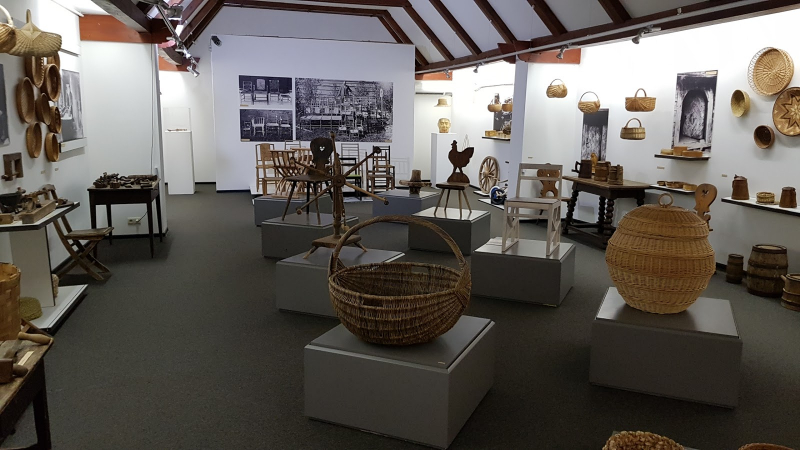
Photo: inspirock.com Video: Baltic Travel -
St. Peter's Church was constructed in 1209, but just a few walls and pillars survive. It was once only a tiny hall with a separate bell tower. During repairs in the 15th century, the present basilica was built. The church hall is impressive, reaching a height of 30 meters in the centre. The altar section, which includes five chapels, exemplifies the Gothic style's verticality and beautiful features. The UNESCO World Heritage Site of Riga St Peter's Church was added to the list in 1997.
Riga's St. Peter's Church, which stands on the city's highest point, is one of the Baltic States' oldest and most significant medieval architecture landmarks. It is located in Riga's historic center and was designated as a UNESCO World Heritage Site in 1997. Exhibitions and performances are held in the church hall. You are invited to explore the church's tower, which offers spectacular views of medieval and modern Riga, the Daugava River with its large harbor, and the Riga Gulf.
The more than 130-meter-high Gothic tower was finished towards the end of the 15th century, but it fell in 1666. In 1690, a new tower with multiple domes and galleries was erected in the Baroque style. St. Peter's Church is in the list of the most beautiful historical sites in Latvia.
Website: http://peterbaznica.riga.lv/Location: Reformācijas Laukums 1, Centra rajons, Rīga, LV-1050, Latvia
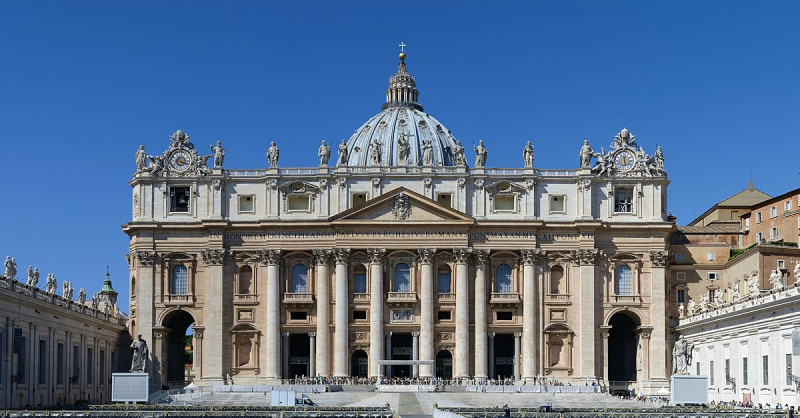
Photo: en.wikipedia.org Video: hors frontieres -
Since July 25, 1211, Riga Cathedral has held the center of Old Riga. The church took on its current look around the end of the nineteenth century, but it today hosts a vibrant cultural life, including concerts by local and international musicians as well as a variety of art exhibitions.
Riga Cathedral has been one of the most important concert venues in Riga and in Latvia for centuries. This is still the case today, when music from many eras is performed in the Dome during both services and regular concerts. Until Livonia's fall in 1561, Riga Cathedral served as the major cathedral of Livonia. Riga Cathedral is Latvia's and the Baltic region's largest and oldest sacral structure. It incorporates elements of Romanesque, early Gothic, Baroque, and Art Nouveau. The building phase of the Riga Dome Cathedral began repairing and restoring the church and the crossroads in 1881, and continued until 1914, giving the cathedral its present look.
See the famed Dome organ in Riga Cathedral, which was the world's biggest organ at the time of its completion in the late 19th century and one of the most beautiful historical sites in Latvia. The archbishop's seat was erected in the 13th century by Bishop Albert of Riga. The Christian faith is guarded by the rooster on the pinnacle of the Baroque clock tower. The biggest medieval church in the Baltic republics, it has undergone several transformations. See the ancient foundations by walking around the cloisters. The cathedral also functions as a performance venue, hosting globally acclaimed choirs.
Website: http://www.doms.lv/index/Location: Herdera laukums 6, Centra rajons, Rīga, LV-1050, Latvia
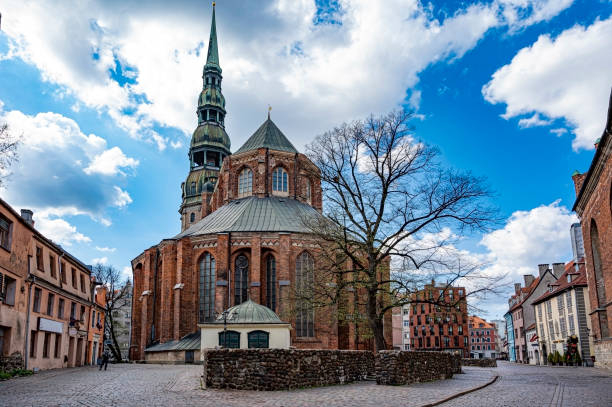
Photo: iStock Video: MKROXTON -
The Riga Nativity of Christ Cathedral is Riga's largest Orthodox cathedral, which survived the Soviet era as a planetarium and restaurant before being restored as a sacral edifice, hosting regular Orthodox church services. This magnificent structure can be seen from the Esplanade in central Riga! The Nativity of Christ Cathedral in Riga is an architectural and stability emblem that anybody seeking consolation and refuge can visit.
Riga Bishop Serafim lay the foundation stone for the cathedral on July 3, 1876. (Protopov). The original plan did not include a separate belfry, but due to an unexpected gift of 12 bells from Russian Czar Alexander II, the design was revised by adding one extra dome for bells. On October 28, 1884, the building was officially opened.
The Nativity of Christ Cathedral is the biggest Orthodox cathedral in the Baltic area, with spectacular icons covering the majority of the interior walls and the most beautiful historical sites in Latvia as well. Examine the 19th-century structure and its pastel interior, which has depictions of Christ and saints. You'll be able to observe traditional Orthodox decorations and frescoes from the Byzantine period. The church, with its dazzling golden domes, dominates the scene from afar. You are invited to purchase and light candles in memory of loved ones here. Although there is no admission price, the church does take gifts.
Website: http://sobor.lv/Location: Brīvības bulvāris 23, Centra rajons, Rīga, LV-1050, Latvia
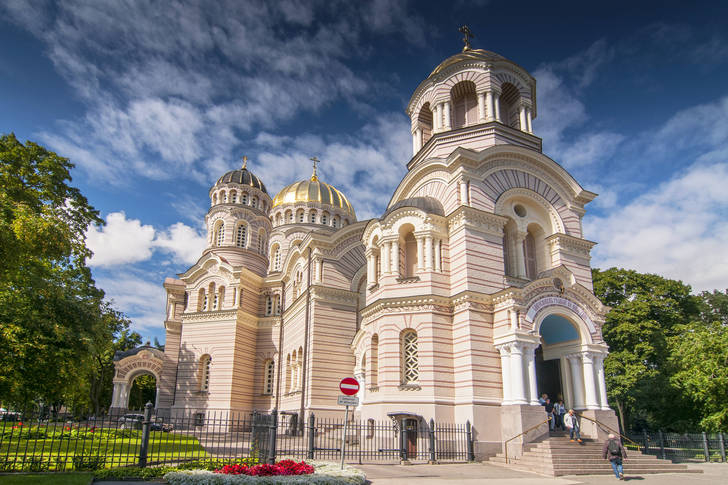
Photo: puzzlegarage.com Video: Paul Girardi -
Cesis Medieval Castle first appeared in the distant past, perhaps 800 years ago. Its roots may be traced back to the Medieval fortress of Cēsis, around which a town was erected in the 13th century. Throughout the years, the castle has fought with the city of Cēsis in conflicts against Russian, Polish, and Swedish forces. The castle was repeatedly renovated and enlarged until it reached its current architectural look in the early 16th century. Today, the castle is the most spectacular testimony to local history, and its romantic beauty of medieval construction draws many visitors.
The Cesis Medieval Castle, with its solid stone exterior, is one of Latvia's best-preserved destroyed castles. Begin your trip at the information center, where you may select whether to travel with a guide or do it alone. To aid your exploration of the castle, you'll be given a copy of the map and one candle. Once inside, seek for the ancient dungeon, which is deep beneath the soil and can only be reached through a small ladder. Take a tour of the castle tower's secret corridors, medieval porch, and attic.
The Western Tower, as well as the Master's living room, can be seen using the map and candlelight from the Cēsis Castle visitor center. The Master's living room contains unique interiors dating from the 16th century, including splendid stellar coves, vaulted consoles made of artificial stone, and fragments of wall paintings.
Website: http://cesupils.lv/
Location: Pils laukums 11, Cēsis, Cēsu pilsēta, LV-4101, Latvia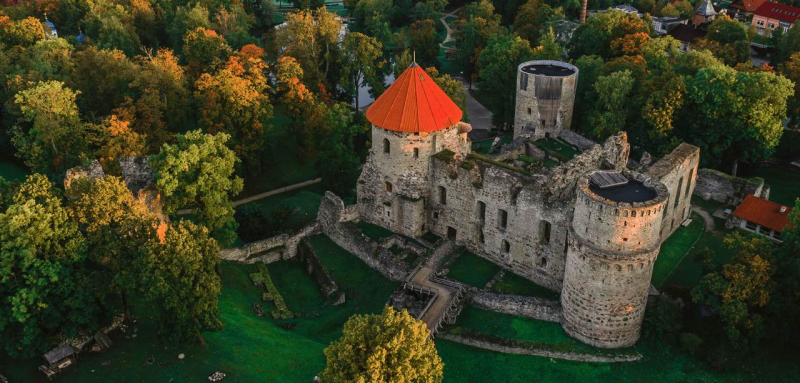
Photo: www.latvia.travel Video: Baltic Travel -
From 1941 to 1945, the Salaspils Memorial Ensemble was built on the site of a National Socialist Germany extended police prison and labor correctional camp (Erweitertes Polizeigefängnis und Arbeitserziehungslager). Deported Jews from Germany, Austria, and Czechoslovakia erected it. The camp housed citizens and military personnel from Latvia, Lithuania, and Estonia, as well as transit convicts from Latgale, Belarus, and Russia. More than 20,000 people passed through the Salaspils camp throughout its different periods of existence. At least 2,000 to 3,000 individuals perished at the camp as a result of hard labor, disease, malnutrition, and brutal treatment and punishments.
On the camp grounds, one of Europe's largest memorial complexes remembering Nazi victims was inaugurated in 1967. With a 100-meter-long concrete wall, the Salaspils Memorial Ensemble forms a representation of the border between life and death, with the words "Beyond these Gates the Land Groans" engraved on it. "Mother," "The Unbroken," "The Humbled," "Protest," "Red Front," "Solidarity," and "The Oath" are among the seven concrete sculptures. The Salaspils Memorial Ensemble is an important aspect of Latvian culture. At the monument's entrance, an exhibition is being built. Sculptors: G. Asaris, O. Ostenbergs, I. Strautmanis, O. Zakamennijs, J. Zari; architects: G. Asaris, O. Ostenbergs, I. Strautmanis, O. Zakamennijs.
Website: www.salaspilsmemorials.lv/en/index/
Location: Salaspils novads, Salaspils pilsēta, LV-2117, Latvia
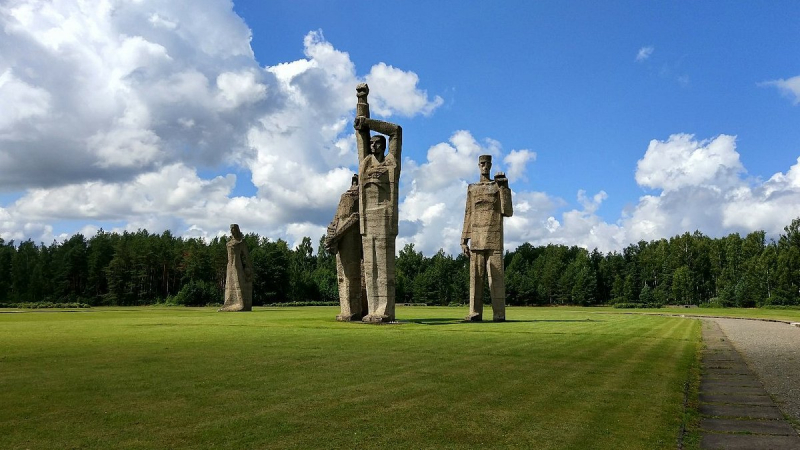
Photo: tripadvisor.com Video: Raimonds LV -
The remains of Sigulda Medieval Castle may be seen on the outskirts of Latvia's Gauja valley. The first castle, which was established as a castellum-style stronghold in 1207, was later rebuilt as a convent-style structure. Since 1432, it has been the home of the Livonian Order's Land Marshal.
The historic castle walls have been strengthened several times in the twentieth century due to its prominence as a tourist attraction. In 2012, the castle reopened its gates to tourists, inviting everyone to take a trip back in time and experience the surroundings, which have seen numerous historical occurrences. The North Tower, also known as the Main Gate Tower, may be climbed to experience the medieval atmosphere.
For decades, this Sigulda Medieval Castle was both a house and a stronghold for the nobles, and it was encircled by gorgeous stone walls. Every summer, during Sigulda's world-famous opera festival, the castle reverberates with the sound of classical music. The Gauja's closeness to the natural river valley creates a unique setting for appreciating man's and nature's works of art. The subtle sounds of music from the castle garden, as well as reverberations from the creative area, liven up the castle's peaceful ambiance. A visit to the castle leaves a wonderful and noble aftertaste, thanks to the magnificent neo-gothic architecture.
Website: http://www.turaida-muzejs.lv/
Location: Pils iela 18, Sigulda, Siguldas pilsēta, LV-2150, Latvia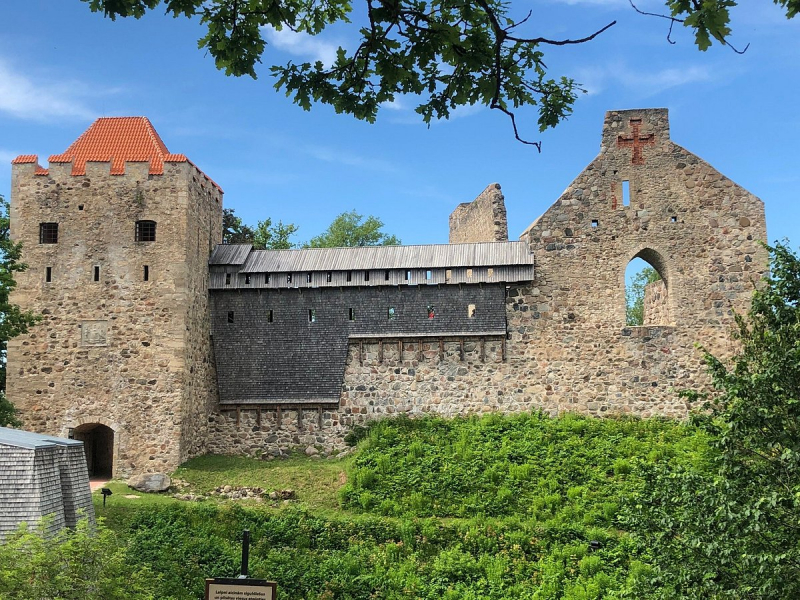
Photo: tripadvisor.com Video: Alex -
Livu Square, one of Riga's most attractive squares, is located in the Old Town of Riga to the north. Between Zirgu, Meistaru, and Kau iela lies Livu Square. Several structures were demolished during World War II, therefore it was "constructed by" the war. It's hard to realize that until the 16th century, the Riga River meandered through the Square, serving as a shipping route for Latvian grain. As the river got smaller, it was renamed the Rdzene River and even Rdzia. Today, tarmac wears away the shoes of countless Rigans and tourists to the city along the historic river path, while lovely flowerbeds harken back to a bygone era.
The Small Guild, Cat House, and Riga Russian Drama Theatre are also located near Livu Square. In the summer, the Square is home to outdoor cafés and lovely flower beds shaped like waves to commemorate the vanished river after which Riga was once called. This Old Town square has a skating rink in the winter. Like in the song about New York City, this is the location in Riga that never sleeps. Lvu Square is the epicenter of Riga's adolescent culture.
Address: Colorful medieval houses in the Livu Square, Riga Old Town, Latvia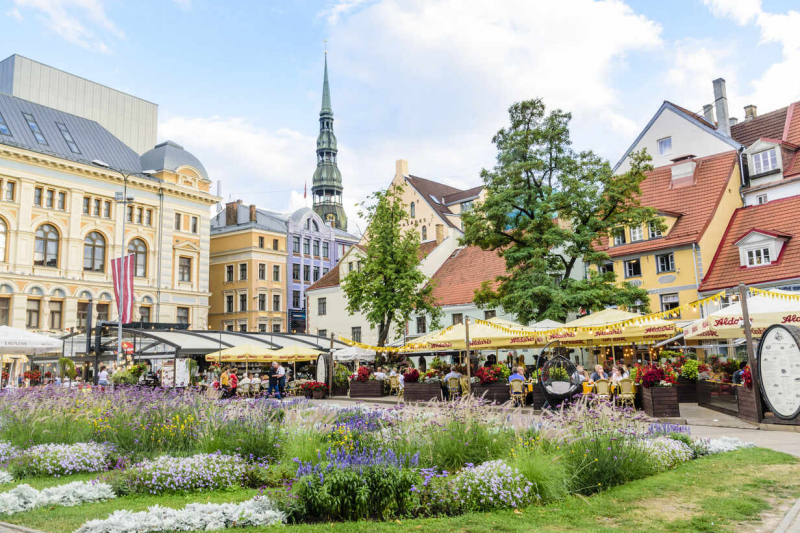
Photo: westend61.de Video: Chojus Europe -
Take your day to the next level at Karosta Prison, where you may go behind bars on a guided tour or firsthand if you're brave enough. The facility, which was once a death-row jail from which no one ever escaped, now recreates the mood of tsarist days. The damp chambers where the detainees spent their days provide insight into their circumstances, and the offices and canteen may be toured. The museum is well-known across the world for its unusual tourist attraction: spending the night in a cell and being treated like a prisoner. Choose your kind of torture and spend the night being verbally tormented, punished, and haunted by the souls of ex-convicts.
Karosta Prison is Europe's only military prison that welcomes visitors. It is known as the world's most odd and surprise hotel. The structure was built with the intention of serving as a military hospital, although it was never utilized for that purpose. It was converted into a correctional facility for short-term disciplinary action. The structure served as a jail until 1997, when the final inmates were released. Nobody had ever escaped from the jail during this period.
Only a guided tour of Karosta Prison is presently available. During the trip, tourists will view the jail, which has remained virtually unchanged since the Tsar's reign, learn about its history, explore the prison cells and the solitary confinement cell, and hear intriguing and eerie anecdotes about prison life.
Website: http://karostascietums.lv/en/
Location: Invalīdu iela 4, Liepāja, LV-3402, Latvia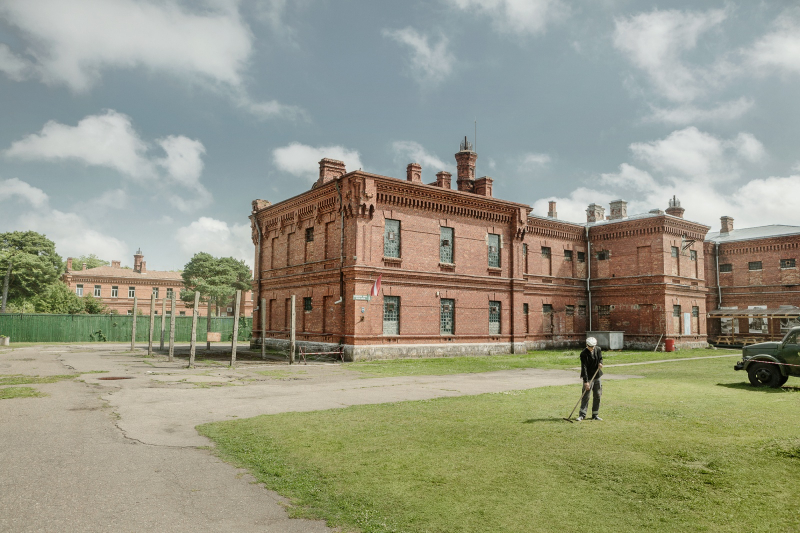
Photo: arthotelroma.lv Video: Ruben y El Mundo































